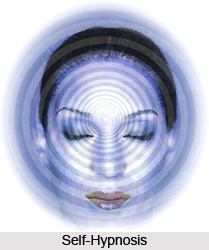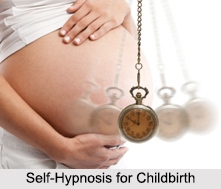 Self-Hypnosis, also known as "Autohypnosis"; is a self induced process, form or result of hypnosis which utilizes self suggestions. Modern hypnotherapy extensively makes use of self-hypnosis. It can be practiced through a learned routine and allows the practitioner to be benefited from their deep potential.
Self-Hypnosis, also known as "Autohypnosis"; is a self induced process, form or result of hypnosis which utilizes self suggestions. Modern hypnotherapy extensively makes use of self-hypnosis. It can be practiced through a learned routine and allows the practitioner to be benefited from their deep potential.
Steps of Self-Hypnosis
Self-hypnosis can be achieved through four distinct steps. The following are the steps for Self-Hypnosis:
•The first step is motivation or dire need which is the foremost requirement for practicing self-hypnosis.
•The second step is relaxation. The practitioner must be fully relaxed and should have enough time to practice it properly. For full attention, all the possible distractions should be eliminated.
•Concentration is the third step. The individual must entirely concentrate on the process because each time when the mind focuses on a single image, energy is generated.
•The last step is directing, which is optional and is only used when the practitioner focuses on a specific goal. For this, the concentration must be directed for visualizing the desired result.
Self-Hypnosis for Stress Relieving
 Self-hypnosis is extremely useful for patients who lack self esteem or are stressed. It helps in inducing relaxation and strengthening self esteem. The concept behind this lies in communicating messages to the patient by the therapist when the former is in a self-hypnotic state. These communications help in allowing the patient to relax and strengthen self esteem. While teaching self-hypnosis the patient is asked to repeat a particular word or phrase. The patients must deliberately use the phrase to hypnotize themselves. Stress also prevents the proper functioning of immune system and thus it has been concluded that self-hypnosis is also useful for shielding the immune system from the adverse effects of stress.
Self-hypnosis is extremely useful for patients who lack self esteem or are stressed. It helps in inducing relaxation and strengthening self esteem. The concept behind this lies in communicating messages to the patient by the therapist when the former is in a self-hypnotic state. These communications help in allowing the patient to relax and strengthen self esteem. While teaching self-hypnosis the patient is asked to repeat a particular word or phrase. The patients must deliberately use the phrase to hypnotize themselves. Stress also prevents the proper functioning of immune system and thus it has been concluded that self-hypnosis is also useful for shielding the immune system from the adverse effects of stress.
Self-Hypnosis as Childbirth Anaesthesia
Self-hypnosis is also helpful for labouring women for alleviating pain. It has been established that self-hypnosis is a risk-free childbirth anaesthetic. Three techniques are used in this regard including Glove Anaesthesia, Time Distortion and Imaginative Transformation. Glove Anaesthesia refers to pretending the hand as numb and keeping it over the painful region for removing the sensation there. Time Distortion is the perception that the periods of time accompanied by pain are shorter in length than normal. Imaginative Transformation refers to perceiving pain as acceptable and non-threatening sensation devoid of any trouble.
Advantages of Self-Hypnosis
Self-hypnosis can be effectively used for curingskin conditions, asthma, obesity, sleep disorders, depression, anxiety and different types of pain. If efficiently practiced, self-hypnosis can be helpful in alleviating headaches, enhancing problem solving, recalling, improving concentration and improving one"s control of emotions. It is also helpful in curing behavioural problems.
Disadvantages of Self-Hypnosis
The strongest disadvantage of self-hypnosis is that it is not a quick fix. The treatment process is gradual so one will not be able to notice the development easily. A consistent practice is required for most of the people. To build the real momentum of self acceptance that frees up energy for healing and achieving goals takes time and sincere practice to cultivate.



